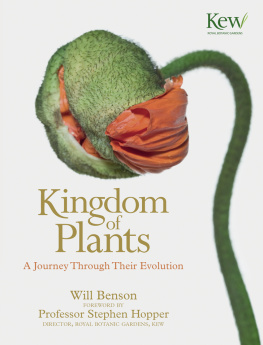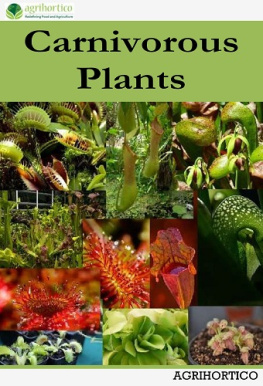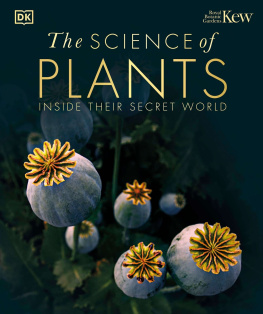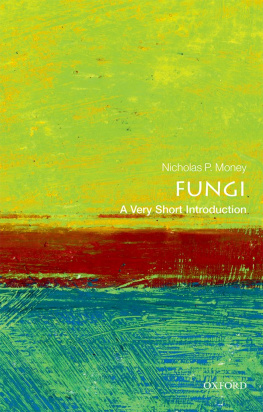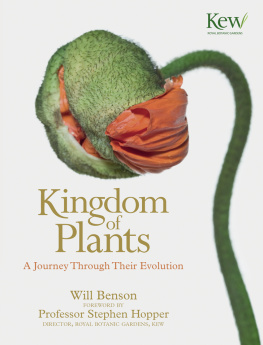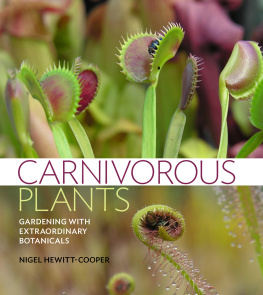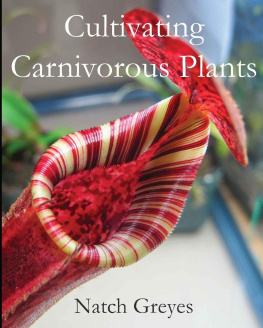
Contents
Foreword by
Professor Stephen D. Hopper
P lant diversity underpins most life on Earth, including ours. Plants provide the oxygen for every breath we take. Think of our daily ingestion of water and food, staying healthy through medicines, living comfortably in buildings, the joys of music, reading, gardening, farming, growing trees and exploring nature.
This book reveals some of the wonders of the plant world, exploring scientific information on the evolution of plants, the wonder of flowering plants, their diverse form and function, and their vital place on Earth. Stories abound of plants having a profound impact on our planet throughout evolutionary history, right up to the present day of unprecedented global change.
It is thrilling for me to revisit this great journey in these pages, from the remarkable evolution of photosynthesis in primeval oceans to the great move onto land through the evolution of desiccation-tolerant plant bodies, pollen and seeds. Who could not marvel at the diversity of the worlds estimated 400,000 flowering plants? Few are not moved by the sheer beauty and intellectual challenge of understanding how such rampant life came to be. This book eloquently tells that story in an accessible up-to-date text.
For those whose interest is more excited by practical uses or the conduct of human affairs, there is much food for thought here as well. Apart from providing us with oxygen and moderating our climate, we learn that plants form a rich foundation for the web of life, and touch the lives of all people in every nation.
A special appeal of this book is its celebration of plant scientists and the insights they continue to bring. Charles Darwin devoted the best part of his last 20 years to the experimental study of plants, realising their value in illustrating evolution by natural selection, and publishing more books and journal pages on plants than on his more celebrated works in geology and zoology. Today, there are more plant scientists alive than ever before, and their discoveries in the field and laboratory are just as compelling.
Much remains to be done in the exploration of plant diversity. We are still discovering and naming 2000 new species of plant on Earth each year, from rainforest trees to colourful shrubs and orchids of temperate climates (especially in the southern hemisphere). Plant diversity unquestionably underpins human existence and livelihoods, yet we continue to destroy it at an alarming rate, with one in five plant species recently estimated to be under threat of extinction.
In our rapidly changing world, we are at a turning point for plant diversity. Without a fundamental shift towards more active conservation and the sustainable use of plants, our prospects for the future are grim indeed. Communicating this message in exciting and innovative ways to mass audiences remains essential. I am delighted that the Royal Botanic Gardens, Kew, has collaborated recently with Sir David Attenborough and Atlantic Productions in providing the plants and location for the astonishing series Kingdom of Plants 3D . I commend this programme and this beautifully produced book to all those who share a sense of wonder in plants and an appreciation of their central place in the lives of all on our one breathing planet.
Professor Stephen D. Hopper
Director (CEO & Chief Scientist)
Royal Botanic Gardens, Kew
April 2012
Watching flowers develop and insects visiting flowers is always wonderful to see, but in 3D it becomes transcendental. Seeing this happen in such depth gives you a most extraordinary, vivid impression. Its unforgettable.
- David Attenborough

To preview the Kingdom of Plants app, scan the code above, and embark on your own journey with David Attenborough as he uncovers the hidden realm of plants at Kew.
T his book, which explores both the splendour and diversity of the world of plants, was written to accompany the landmark television series Kingdom of Plants 3D with David Attenborough , produced by Atlantic Productions for Sky3D. Using cutting-edge stereoscopic cinematography, this revolutionary 3D project follows David Attenborough in his 60th year of broadcasting, as he uncovers the most amazing spectacles of the botanical world. Filmed over one year at the Royal Botanic Gardens, Kew, this series captures time-lapse footage of flowers as they burst into bloom, captivating interactions between plants and insects in microscopic detail, as well as snapping carnivorous plants and mystifying orchids all filmed for the first time in three dimensions. Discover how plants first began to live on land, and how they have come to fill their place in the natural world today.

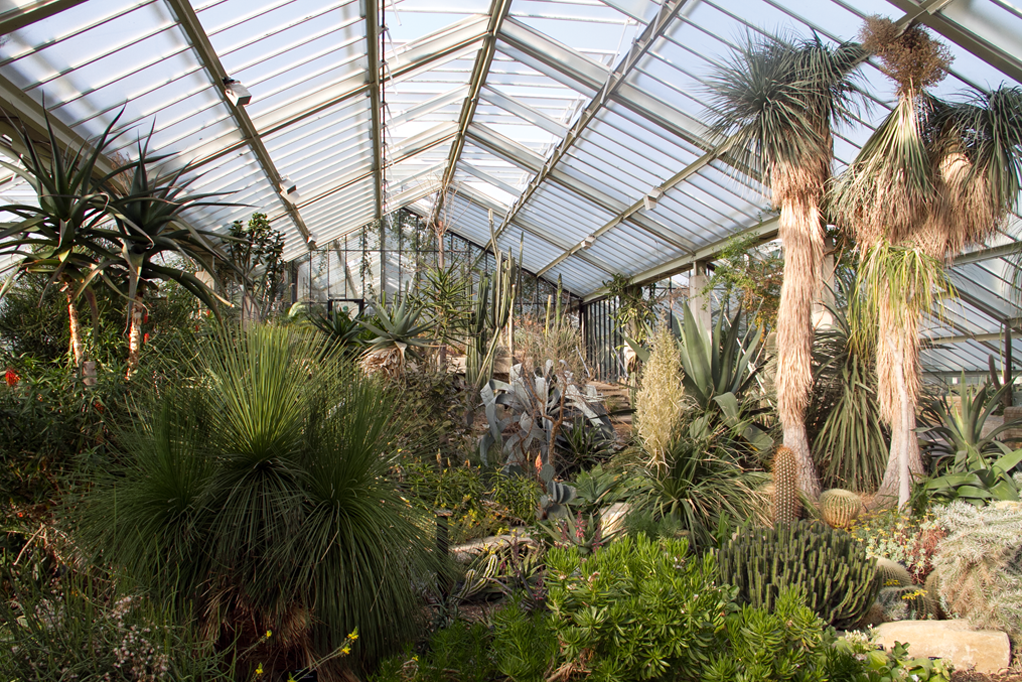
RBG Kew
With the spread of plants onto land, their shapes and sizes soon began to diversify.
I n the last five hundred million years, plants have undertaken an epic evolutionary journey that has altered the very make-up of the planet. This journey began in a dark and acidic world and continues today in a world of rich colours, ornate shapes and mesmerising smells.
Every single step of their incredible evolutionary journey has been integral to creating the world we live in today. It is only by pulling apart the threads which create this rich network of flora that we can begin to uncover the extraordinary ways in which plants have come to live and thrive in all environments.
From their humble beginnings plants have become progressively complex and increasingly important to life on Earth. It is only through the success of the plant life on our planet that the animals that walk the Earth can be supported and it is the success of plants that has allowed humans to exist. Ultimately it is plants that will secure a place for our species to exist long into the future.

Blue morpho (Morpho peleides)
Plants today help support vast ecosystems of interconnected species.
RBG Kew
Over millions of years plants have become increasingly defined and specialised, carving out their own niches on the surface of the planet; each one striving for the evolutionary equivalent of the limelight a chance to reproduce and spread their genes. In the beginning of the journey we uncover the origins of photosynthesis, an elegant mechanism which revolutionised the way organisms could obtain energy, providing a powerhouse through which plants could grow and compete. In the next step, plants make a crucial leap out of their watery beginnings, as they moved onto the land. But it is from here that the botanical world really came into its own. Plants became tough and tall, developing structural wood that allowed them to reach new heights. They developed mighty anchoring roots and broad, air-pumping canopies. Skipping forward a few hundred million years we meet the rise of the first flowers, signalling the beginning of a great and ground-shaking love affair between insects and plants, setting in motion a course of events that would bind some plants to the animal world. From this point, the pace of the story picks up as we enter the age of rich biodiversity and intricate connections between Earths flora and fauna; we discover the extraordinary relationships between plants and animals, and we see that from one form of simple plant, many millions of diverse species have now evolved. And yet the most crucial chapters in the story of plants are still being written
Next page
